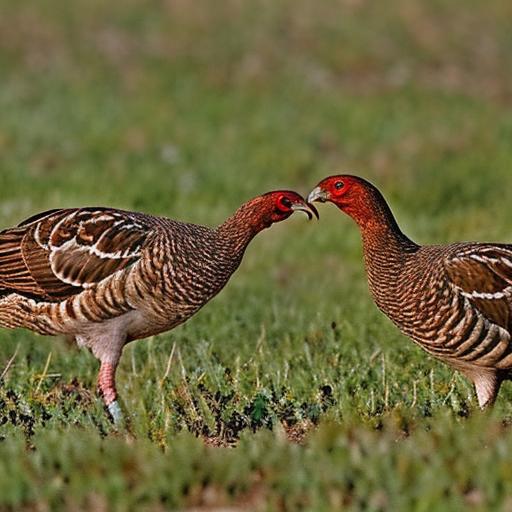Environmental factors play a crucial role in the behavior and habits of animals, including humans. The natural surroundings, climate, and geographical location can all impact an individual’s daily routine and lifestyle. For example, animals living in colder climates may have to adapt to shorter daylight hours and harsher weather conditions, which can affect their feeding patterns and social interactions. On the other hand, animals living in warmer climates may have access to a wider variety of food sources and longer daylight hours, allowing for different behavioral patterns.
Furthermore, environmental factors such as pollution, deforestation, and urbanization can also have a significant impact on animal behavior. For instance, the destruction of natural habitats can force animals to seek out new sources of food and water, leading to changes in their daily routines and social interactions. Additionally, exposure to pollutants and toxins in the environment can have detrimental effects on an animal’s health and well-being, leading to changes in behavior and habits. Overall, environmental factors play a crucial role in shaping the behavior and habits of animals, and it is important to consider these factors when studying and understanding animal behavior.
Environmental factors are crucial in shaping the behavior and habits of animals. The natural surroundings, climate, and geographical location can all impact an individual’s daily routine and lifestyle. For example, animals living in colder climates may have to adapt to shorter daylight hours and harsher weather conditions, which can affect their feeding patterns and social interactions. On the other hand, animals living in warmer climates may have access to a wider variety of food sources and longer daylight hours, allowing for different behavioral patterns. Furthermore, environmental factors such as pollution, deforestation, and urbanization can also have a significant impact on animal behavior. For instance, the destruction of natural habitats can force animals to seek out new sources of food and water, leading to changes in their daily routines and social interactions. Additionally, exposure to pollutants and toxins in the environment can have detrimental effects on an animal’s health and well-being, leading to changes in behavior and habits. Overall, environmental factors play a crucial role in shaping the behavior and habits of animals, and it is important to consider these factors when studying and understanding animal behavior.
Key Takeaways
- Environmental factors such as temperature and weather can significantly impact an animal’s behavior and well-being.
- Hormonal changes, such as mating seasons or pregnancy, can greatly influence an animal’s behavior and interactions with others.
- The availability of food and water can directly affect an animal’s survival and behavior, leading to changes in foraging and social patterns.
- Daylight length can affect an animal’s activity patterns, reproduction, and migration behaviors.
- Social interactions with other animals can impact an individual’s behavior, stress levels, and overall well-being.
- Genetics play a significant role in determining an animal’s behavior, including traits such as aggression, sociability, and adaptability.
- Health and well-being are closely tied to an animal’s behavior, with factors such as diet, exercise, and stress levels playing a crucial role.
Hormonal Changes
Hormonal changes can have a profound impact on an animal’s behavior and habits. Hormones are chemical messengers that regulate various bodily functions, including growth, metabolism, and reproduction. Fluctuations in hormone levels can lead to changes in mood, energy levels, and social interactions. For example, during mating season, animals may experience an increase in testosterone or estrogen levels, leading to changes in their behavior as they seek out potential mates and compete with rivals for breeding opportunities.
Furthermore, hormonal changes can also impact an animal’s feeding patterns and energy levels. For instance, pregnant or nursing animals may experience fluctuations in hormone levels that affect their appetite and energy expenditure as they care for their offspring. Additionally, stress hormones such as cortisol can influence an animal’s response to environmental challenges and threats, leading to changes in behavior and habits. Overall, hormonal changes play a significant role in shaping an animal’s behavior and habits, and it is important to consider these factors when studying and understanding animal behavior.
Hormonal changes can have a profound impact on an animal’s behavior and habits. Hormones are chemical messengers that regulate various bodily functions, including growth, metabolism, and reproduction. Fluctuations in hormone levels can lead to changes in mood, energy levels, and social interactions. For example, during mating season, animals may experience an increase in testosterone or estrogen levels, leading to changes in their behavior as they seek out potential mates and compete with rivals for breeding opportunities. Furthermore, hormonal changes can also impact an animal’s feeding patterns and energy levels. For instance, pregnant or nursing animals may experience fluctuations in hormone levels that affect their appetite and energy expenditure as they care for their offspring. Additionally, stress hormones such as cortisol can influence an animal’s response to environmental challenges and threats, leading to changes in behavior and habits. Overall, hormonal changes play a significant role in shaping an animal’s behavior and habits, and it is important to consider these factors when studying and understanding animal behavior.
Availability of Food and Water
The availability of food and water is a critical factor that influences an animal’s behavior and habits. Animals must constantly seek out sources of nourishment to sustain themselves and meet their energy requirements. The availability of food sources can impact an animal’s feeding patterns, foraging behaviors, and social interactions. For example, during times of scarcity, animals may need to travel greater distances or compete more fiercely for limited resources, leading to changes in their daily routines and social dynamics.
Similarly, the availability of water is essential for the survival of all living organisms. Animals must have access to clean water sources for drinking and bathing purposes. The scarcity of water can lead to increased competition among individuals and species for access to these vital resources. Additionally, the availability of food and water can also influence an animal’s health and well-being. A lack of adequate nutrition or hydration can lead to malnutrition, dehydration, and other health issues that can impact an animal’s behavior and habits. Overall, the availability of food and water is a fundamental factor that shapes the behavior and habits of animals.
The availability of food and water is a critical factor that influences an animal’s behavior and habits. Animals must constantly seek out sources of nourishment to sustain themselves and meet their energy requirements. The availability of food sources can impact an animal’s feeding patterns, foraging behaviors, and social interactions. For example, during times of scarcity, animals may need to travel greater distances or compete more fiercely for limited resources, leading to changes in their daily routines and social dynamics. Similarly, the availability of water is essential for the survival of all living organisms. Animals must have access to clean water sources for drinking and bathing purposes. The scarcity of water can lead to increased competition among individuals and species for access to these vital resources. Additionally, the availability of food and water can also influence an animal’s health and well-being. A lack of adequate nutrition or hydration can lead to malnutrition, dehydration, and other health issues that can impact an animal’s behavior and habits. Overall, the availability of food and water is a fundamental factor that shapes the behavior and habits of animals.
Daylight Length
The length of daylight hours has a significant impact on the behavior and habits of animals. Many species exhibit diurnal or nocturnal activity patterns based on the natural cycle of light and darkness. Daylight length can influence an animal’s feeding times, sleep patterns, mating behaviors, and overall activity levels. For example, diurnal animals are typically active during daylight hours when they have better visibility for foraging and social interactions. In contrast, nocturnal animals are more active during the nighttime when they have adapted sensory abilities for hunting and navigating in low-light conditions.
Furthermore, changes in daylight length throughout the year can also trigger seasonal behaviors such as migration, hibernation, or breeding activities. Animals may adjust their daily routines based on the shifting patterns of daylight hours as a response to changing environmental conditions. Additionally, artificial lighting from human activities can disrupt natural daylight cycles for many species, leading to changes in their behavior and habits. Overall, the length of daylight hours plays a crucial role in shaping the behavior and habits of animals.
The length of daylight hours has a significant impact on the behavior and habits of animals. Many species exhibit diurnal or nocturnal activity patterns based on the natural cycle of light and darkness. Daylight length can influence an animal’s feeding times, sleep patterns, mating behaviors, and overall activity levels. For example, diurnal animals are typically active during daylight hours when they have better visibility for foraging and social interactions. In contrast, nocturnal animals are more active during the nighttime when they have adapted sensory abilities for hunting and navigating in low-light conditions. Furthermore, changes in daylight length throughout the year can also trigger seasonal behaviors such as migration, hibernation, or breeding activities. Animals may adjust their daily routines based on the shifting patterns of daylight hours as a response to changing environmental conditions. Additionally, artificial lighting from human activities can disrupt natural daylight cycles for many species, leading to changes in their behavior and habits. Overall, the length of daylight hours plays a crucial role in shaping the behavior and habits of animals.
Social Interactions
Social interactions play a vital role in shaping the behavior and habits of animals. Many species are highly social creatures that engage in complex communication systems, hierarchical structures, cooperative behaviors, and mating rituals within their social groups. The dynamics of social interactions can influence an individual’s daily routines, reproductive success, stress levels, and overall well-being.
For example, dominant individuals within a social group may have priority access to food resources or mating opportunities compared to subordinate individuals. This hierarchy within social groups can impact an individual’s feeding patterns, stress levels, and overall behavior as they navigate their place within the group dynamics. Additionally, social interactions can also provide emotional support, protection from predators, opportunities for learning from others within the group.
Furthermore, social interactions can also influence an individual’s health through the spread of diseases or parasites within a group. Close proximity within social groups can facilitate the transmission of pathogens between individuals leading to changes in behavior or health status within the group dynamics.
Overall social interactions play a crucial role in shaping the behavior and habits of animals.
Social interactions play a vital role in shaping the behavior and habits of animals. Many species are highly social creatures that engage in complex communication systems, hierarchical structures, cooperative behaviors, and mating rituals within their social groups. The dynamics of social interactions can influence an individual’s daily routines, reproductive success, stress levels, and overall well-being.
For example dominant individuals within a social group may have priority access to food resources or mating opportunities compared to subordinate individuals this hierarchy within social groups can impact an individual’s feeding patterns stress levels overall behavior as they navigate their place within the group dynamics.
Additionally social interactions can also provide emotional support protection from predators opportunities for learning from others within the group.
Furthermore social interactions can also influence an individual’s health through the spread of diseases or parasites within a group close proximity within social groups can facilitate the transmission of pathogens between individuals leading to changes in behavior or health status within the group dynamics.
Overall social interactions play a crucial role in shaping the behavior habits of animals.
VI Genetics
Genetics play a significant role in shaping an animal’s behavior habits through inherited traits predispositions passed down from one generation to another.
For example certain species may have genetic predispositions towards specific behaviors such as migration nesting hunting strategies that are passed down through their genetic lineage.
Additionally genetic variations within a population can lead to differences in individual behaviors such as boldness shyness aggression or sociability which can impact an animal’s daily routines social interactions.
Furthermore genetic factors can also influence an animal’s susceptibility to certain diseases or health conditions which may impact their overall well-being behavior.
Overall genetics play a crucial role in shaping the behavior habits of animals through inherited traits predispositions passed down from one generation to another.
Genetics play a significant role in shaping an animal’s behavior habits through inherited traits predispositions passed down from one generation to another.
For example certain species may have genetic predispositions towards specific behaviors such as migration nesting hunting strategies that are passed down through their genetic lineage.
Additionally genetic variations within a population can lead to differences in individual behaviors such as boldness shyness aggression or sociability which can impact an animal’s daily routines social interactions.
Furthermore genetic factors can also influence an animal’s susceptibility to certain diseases or health conditions which may impact their overall well-being behavior.
Overall genetics play a crucial role in shaping the behavior habits of animals through inherited traits predispositions passed down from one generation to another.
VII Health Well-being
An animal’s health well-being are fundamental factors that influence their behavior habits.
For example individuals that are experiencing pain illness or malnutrition may exhibit changes in their feeding patterns activity levels social interactions as they cope with their health challenges.
Additionally chronic stress poor living conditions or exposure to environmental toxins can also impact an animal’s overall well-being leading to changes in their behavior habits.
Furthermore good health well-being are essential for an animal’s ability to engage in normal activities such as feeding mating raising offspring engaging in social interactions with others within their species.
Overall health well-being are fundamental factors that influence an animal’s behavior habits.
An animal’s health well-being are fundamental factors that influence their behavior habits.
For example individuals that are experiencing pain illness or malnutrition may exhibit changes in their feeding patterns activity levels social interactions as they cope with their health challenges.
Additionally chronic stress poor living conditions or exposure to environmental toxins can also impact an animal’s overall well-being leading to changes in their behavior habits.
Furthermore good health well-being are essential for an animal’s ability to engage in normal activities such as feeding mating raising offspring engaging in social interactions with others within their species.
Overall health well-being are fundamental factors that influence an animal’s behavior habits.
Overall health and well-being are fundamental factors that influence an animal’s behavior and habits. When an animal is in good physical and mental health, they are more likely to exhibit positive behaviors such as playfulness, curiosity, and social interaction. On the other hand, poor health or stress can lead to negative behaviors such as aggression, fearfulness, or withdrawal. Additionally, a healthy animal is more likely to engage in regular exercise, proper grooming, and a balanced diet, all of which contribute to their overall well-being. Therefore, it is important for animal caregivers to prioritize the health and well-being of their animals in order to promote positive behaviors and habits.
If you’re interested in learning more about turkey breeding and the factors that trigger it, you might also want to check out an article on creating the perfect environment for your poultry. The article “Garden Chicken Coop” on PoultryWizard.com provides valuable insights into designing a garden chicken coop that can contribute to a healthy and productive breeding environment for turkeys. With tips on creating a comfortable and natural setting for your birds, this article complements the discussion on turkey breeding triggers. You can find it here.
FAQs

What are the triggers for turkey breeding?
The triggers for turkey breeding include increasing daylight hours, warmer temperatures, and the availability of food and water.
How does increasing daylight hours trigger turkey breeding?
Increasing daylight hours signals to turkeys that it is the breeding season, which stimulates hormonal changes and reproductive behaviors.
Why do warmer temperatures trigger turkey breeding?
Warmer temperatures provide a more favorable environment for turkey breeding, as it supports the growth of vegetation and insects that turkeys rely on for food and nesting materials.
How does the availability of food and water trigger turkey breeding?
Adequate food and water resources are essential for turkeys to successfully breed and raise their young. When these resources are plentiful, turkeys are more likely to engage in breeding behaviors.
Meet Walter, the feathered-friend fanatic of Florida! Nestled in the sunshine state, Walter struts through life with his feathered companions, clucking his way to happiness. With a coop that’s fancier than a five-star hotel, he’s the Don Juan of the chicken world. When he’s not teaching his hens to do the cha-cha, you’ll find him in a heated debate with his prized rooster, Sir Clucks-a-Lot. Walter’s poultry passion is no yolk; he’s the sunny-side-up guy you never knew you needed in your flock of friends!







